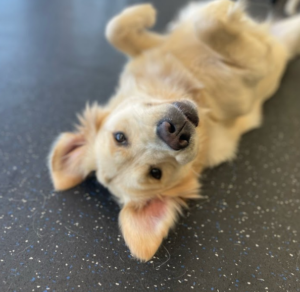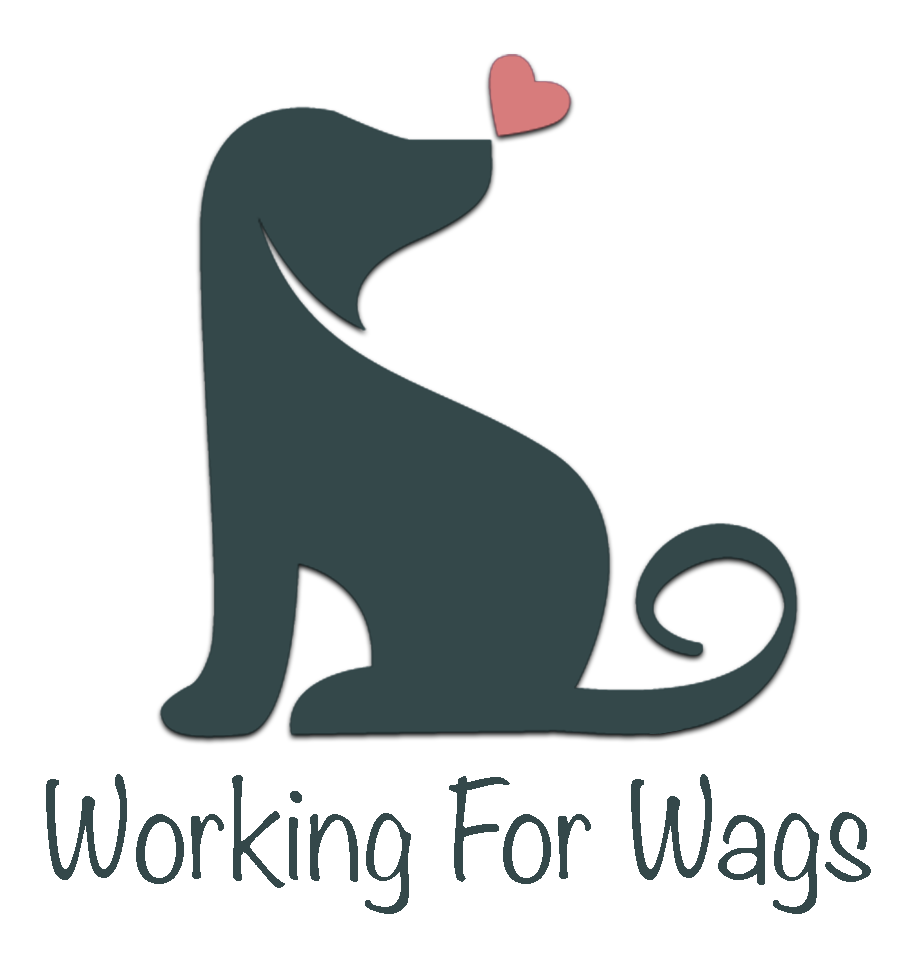Dog play can be hard to understand or even overwhelming to us humans — dogs will wrestle, chase, show their teeth, and make lots of noise during playtime. We’re here to help you understand dog body language so that you can feel better knowing what is proper dog play versus what is actually worrisome behavior.
What Does Proper Dog Play Look Like?
 Loose and Bouncy
Loose and Bouncy
Look for loose, relaxed bodies and faces. Dogs should seem floppy in their movements! They make big, exaggerated movements when they’re playing. They may also be happily falling down, exposing their belly, and showing that they’re comfortable.
Noisy
Sounds made during play are exaggerated, too! You can expect play growling and snarling to be prolonged and extra loud. This might also include medium to high-pitched barking.
Role Reversals
Good playmates switch roles, so that they share the victories! A dog might start as the one being chased, then switch to start chasing the other. Likewise, one might be on bottom during wrestling, then the other takes a turn underneath.
Dogs that are larger, older, or stronger will also hinder themselves during play. This means they make themselves act smaller and lessen the intensity of play to better match a smaller dog playmate.
 Lots of Pauses
Lots of Pauses
Proper dog play includes lots of brief pauses to help relieve their escalating energy. Some dogs do a great job of managing this by taking breaks during wrestling or chasing. These breaks might be so fast that humans will only catch a blink of it, but sometimes they’re longer if the play is getting wild.
You might also see some calming signals during these quick pauses. One dog will demonstrate that they are getting too worked up and that they need a moment or they may tell the other dog that they are being too overwhelming.
Play Bows
A play bow is a signal made when one dog “bows” at the other dog. This is a pose made with their front elbows on the floor and their rear in the air (a lot like the downward dog pose in yoga). This is a signal that either invites another dog to play– or it may happen during play, communicating something like: ”I’m still playing, you’re still playing, right?” It provides a nice break and check-in for both dogs to catch their breath and reaffirm that they’re on the same page.
You might also see other play body language, like hip bumps and lots of chuffing/sneezing behavior.
Proper Bite Inhibition
Dogs use their teeth a lot during play with each other, so displaying bite inhibition is crucial. Bite inhibition is when a dog knows how to keep their mouth gentle enough to not hurt the other dog while playing. This is something they learn from their littermates, parents, other non-related dogs, and their humans!
 Next time you watch your dog playing, keep in mind what these good behaviors look like! Try not to prevent proper play from happening– your dog will love having friends that they can let loose with. If you’re nervous or still learning how to monitor healthy play, then rely on the experts at Dogs of Tucson! Our team always oversees dog interactions carefully to ensure that play is safe, polite, and enjoyable for every pup involved.
Next time you watch your dog playing, keep in mind what these good behaviors look like! Try not to prevent proper play from happening– your dog will love having friends that they can let loose with. If you’re nervous or still learning how to monitor healthy play, then rely on the experts at Dogs of Tucson! Our team always oversees dog interactions carefully to ensure that play is safe, polite, and enjoyable for every pup involved.

